Tadeusz Kościuszko dedicated his life to tolerance and liberty for all. He was a man ahead of his time and led by setting an example that we should all try to follow – says Alex Storozynski.
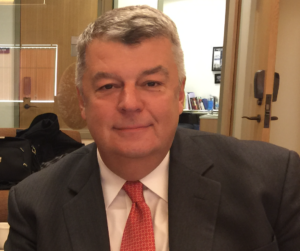
Tadeusz Kościuszko is an extraordinary historical figure – a hero of two nations, Poland and the United States. Where was he from? What can we say about his family?
Tadeusz Kościuszko, born in February 1746, was the youngest child of Tekla Ratomska, and Ludwik Kościuszko, whose family had Lithuanian-Ruthenian roots, but were culturally Polish. The family had a mid-sized estate on which 31 peasant families worked their land. While they were well off, they were not considered wealthy by the standards of the nobility.
Ludwig Kościuszko had the ceremonial rank of Colonel and the title “Sword-bearer of Brest.” On holidays, Polish nobles would dust off their Hussar armor and weapons and dress up and parade around. These celebrations stirred the imagination of young Tadeusz who grew up dreaming of joining the military.
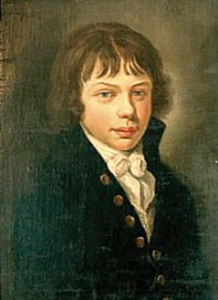
What do we know about Kościuszko’s education?
At the age of 9, Tadeusz was sent to the Catholic Piarist Fathers College and was educated according to a new syllabus set up by Father Stanislaw Konarski, who was revolutionizing Poland’s Jesuit run school system. Kościuszko was fascinated with the Ancient Greeks and the Roman Empire. He was also obsessed with a biography of Timoleon, the Greek statesman and general who freed his fellow Corinthians and the Sicilians from the tyranny of Carthage. Kościuszko explained his hero worship of this historic figure by saying, “He overthrew tyrants, set up republics and never demanded any power for himself.”
When his father died, Prince Adam Czartoryski paid for Tadeusz to attend Warsaw’s newly established military academy, known as the “School of Chivalry” [Corps of Cadets]. Kościuszko was an ambitious student and before going to bed, he would tie a string to his hand, leaving the other end out in the hallway. He asked the night watchman to wake him at 3 a.m. by tugging on it during his rounds to stoke the furnaces. He studied construction, topography, practical geography for mapmaking, trigonometry, drawing and engineering. He aggressively practiced swordsmanship with his classmates, sometimes even drawing blood. Although one of the most physical students, he did not bully the weaker students and became one of the most popular cadets because he was unpretentious and likable. He was eventually appointed a Captain of the artillery.
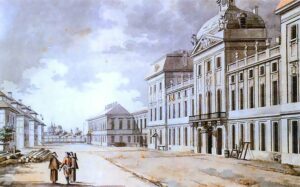
After graduation Kościuszko went to France. What was the goal of this journey?
After he graduated, Prince Adam Czartoryski sent Kościuszko to Paris to study at the Royal Academy of Painting and Sculpture. The goal was to acquire military expertise, but as a foreigner, he could not officially attend the École Militaire or the military engineering academy of Mézières, so he tracked down professors from the military schools to tutor him privately. Kościuszko learned the war strategies of Marshal Sebastien le Prestre de Vauban, Europe’s foremost authority on building and besieging forts. He studied architecture and read Montesquieu, Voltaire and Jean Jacques Rousseau’s social contract between government and the people with plans to come back to Poland and help reform the government.
In 1776, Kościuszko went to America. Why did this Polish-Lithuanian noble travel there?
By then, Europeans knew that a rebellion was brewing in America. This was three years after the Boston Tea Party where colonists were protesting “taxation without representation.”
Kościuszko’s family benefited from serfdom, but early on he was disgusted by the injustice and immorality of slave labor. In Paris, he read Francois Quesnay, whose new philosophy called “physiocracy” said that land was the only true source of wealth and agriculture was the key to prosperity. Physiocrats believed that only those who owned or leased land should be taxed. They opposed forced labor for serfs and argued that peasants should be able to migrate to find work. They also advocated a natural law where government followed a hands-off, “laissez faire,” approach to economics. They opposed taxes on farmers and their harvest and argued that free markets meant individual liberty and economic security. The liberal ideals of physiocracy had incredible implications for Poland because it would end feudalism.
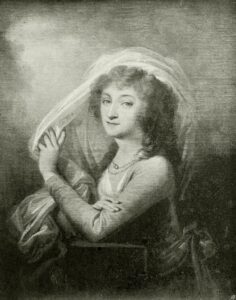
When he returned to Poland, Kościuszko was hired to tutor Ludwika Sosnowska, the daughter of one of richest men in Poland. They fell in love when Kościuszko learned that Ludwika had translated the first book on physiocracy from French into Polish. Her father disapproved of their plans to marry, so they attempted to elope. Her father caught them and wanted to prosecute Kościuszko for kidnapping. Prince Czartoryski, who had paid for his military education in Warsaw and Paris, gave Kościuszko money to escape to Paris or Philadelphia with the goal of learning from the revolutionary movements that were brewing. The Poles wanted to push back against the power of the Russian monarchy.
What was Kościuszko’s role in the American Revolution? How did he help the 13 colonies attain sovereignty?
Kościuszko’s military education in artillery, fort construction, and strategy had an enormous impact on the American Revolution. In my research it became clear that Kościuszko did not have a letter of recommendation and that he simply walked into Benjamin Franklin’s shop in Philadelphia. The Americans gave the young Polish Captain a math test and he did so well that Franklin put him in charge of building forts on the Delaware river. Kościuszko also built an underwater system of Chevaux de frise in the harbor which would have punctured the hulls of any British ships that tried to enter.
As a result of this, the British changed their plans to attack Philadelphia and moved troops to Canada to attack New York from the north. The Americans were thrilled that they finally had an educated military engineer.
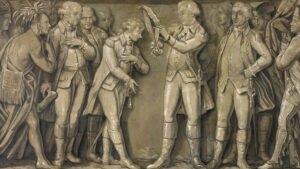
Congress made Kościuszko a Colonel in the Continental Army’s corps of engineers and sent him to upstate New York to prepare the troops for the coming invasion. Kościuszko devised the plan that won the Battle of Saratoga. When Gen. Horatio Gates, who headed the Northern Army, was praised for the victory, he gave the credit to Kościuszko’s tactics to use the hills and forests to force the British troops to march uphill into a bottleneck. This was the first major victory for the Continental Army and they killed and captured thousands of British soldiers.
Was it a significant event for the conflict?
Indeed, it was a turning point. After this, France decided to join the United States as an ally and George Washington put Kościuszko in charge of building West Point, a fortress on the Hudson River that was called the American Gibraltar. This made the territory north of New York City impenetrable to British attack. And when Kościuszko was transferred to help the Southern Army, General Benedict Arnold tried to sell Kościuszko’s plans for West Point to the British. It was the most infamous act of treason in American history. But luckily, the plot was uncovered, and Arnold was forced to flee.
Kościuszko spent the final years of the Revolution in the southern states, building flat bottom boats that could easily be taken up onto land and easily returned into rives so that his troops could escape attacks from the British. This is where Kościuszko witnessed the horrors of American slavery. Because he interacted with them in a respectful way, some of the enslaved Africans worked for him as spies, reporting to him the location of the British troops. At the end of the war, Kościuszko was hired by Congress to put on the first post war fireworks display to celebrate the 4th of July.
See also: Hugo Kołłątaj, the dominant ideologue of the Polish Enlightenment
In 1784, Kościuszko returned to the Polish-Lithuanian Commonwealth. What made him return to his homeland?
During the American Revolution, Kościuszko had served as an officer in the United States Army for more than seven years, longer than any other foreign officer. He missed his family and his homeland and hoped to be of service to Poland.
As a battle-tested general, Kościuszko wanted to serve his country and visited the royal castle to ask for a military post. King Stanislaw was eager to hear the latest news from across the ocean and granted an audience to this famous cadet. Kościuszko met with Stanislaw in a drawing room of the castle and they talked about the new system of government being set up in the United States. During the conversation, the king spied the medallion of the Order of the Cincinnati given to him by George Washington that was hanging around Kościuszko’s neck.
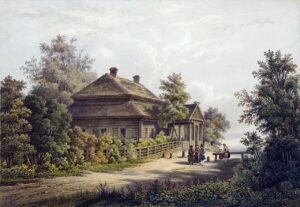
The king examined the medal and read the inscription out loud, Omnia reliquit servare rem publicam, “He left everything to save the state.” Stanislaw was offended by the medal and said, “Methinks this inscription savors somewhat of fanaticism.” The king said that the citizens of a nation had other obligations in addition to public affairs.
Kościuszko replied that a citizen’s duty to his nation’s public affairs was foremost and encompassed all of his other duties as well. After quietly listening to his subject’s arguments, the king turned his back and left the room in a huff. In the end, the American brigadier’s commission as an officer in the Polish military would not materialize and Kościuszko returned to his country estate.
How did Kościuszko engage in politics during the last years of the Polish-Lithuanian Commonwealth?
It was actually his great love Ludwika, who lured him into Polish politics. She had been forced to marry Prince Józef Lubomirski and had a higher noble rank than Kościuszko. She wrote a letter to King Stanislaw saying: “In America [Kościuszko] served honorably as a professional, and if he served so eagerly for foreigners, imagine how much more useful he will be to his own fatherland.”
Ludwika then wrote a letter to Kościuszko saying that he should return to Warsaw because the Sejm, the Polish parliament, was about to commission officers for a new army.
Kościuszko played a role in the history of the first Polish (and Europe’s) constitution. What can we say of it?
When Kościuszko returned to Warsaw, he met Hugo Kołłątaj and some of the other reformers who were planning to write a new Polish Constitution. Kościuszko shared with them the things that he had learned from revolutionaries whom he had known in the United States and France. Kołłątaj and Kościuszko both thought slavery and serfdom were immoral.
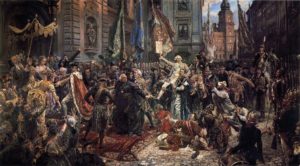
Although the 44-year-old Kościuszko was the only general with significant battle experience, the king named his 26-year-old nephew, Prince Joseph Poniatowski as the commander of the military. Kościuszko was also commissioned as a general, but he had to report to the young playboy prince whose only real experience was on the dance floor.
When the Sejm passed the new Constitution on May 3, 1791, Russia and Prussia sent troops to squash the democratic movement in Poland, and Kościuszko fought in the war to defend the Constitution. Unfortunately, King Stanislaw and young Prince Poniatowski were not as committed to fighting for freedom as they should have been. Kościuszko’s troops won several battles against larger Russian forces, but Prince Poniatowski pulled back to Warsaw and King Stanislaw surrendered to Catherine the Great. Kościuszko was furious.
How did Kościuszko become the leader of the insurrection against Prussia and Russia, and what was the result of this war?
With the collapse of Constitution, Kościuszko travelled through Europe looking for military allies to help the Poles drive out the Russians. He went to Leipzig, Paris and even Rome looking for help. But while the French were calling for a worldwide revolution in the name of Liberté, Egalité, Fraternité, they were in no position to send troops to fight for Poland’s freedom.
It was Kołłątaj who wrote, “we agree that an insurrection in Poland should be led under the dictatorship of one man who could inspire universal trust. The whole nation was pointing to Kościuszko.”
Kościuszko was reluctant and did not want to fight again unless the Poles were truly committed to winning. He told the reformers that they needed a real army. They convinced him that they had gathered thousands of real soldiers, so Kosciusko returned to Poland. On March 24, 1794, in a ceremony in Krakow’s town square, the reformers, noblemen and clergy named Kościuszko “Naczelnik”, otherwise known as “Commander in Chief of Poland”.
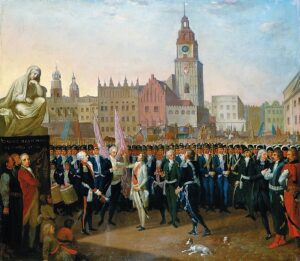
What steps did Kościuszko take as the Commander in Chief?
In a rousing speech, Kościuszko promised freedom for all. He invited both peasants and Jews to join his army, and they did. Kościuszko issued the Polaniec Proclamation granting civil rights and freedom to the serfs. The Jews also supported Kościuszko and even started a cavalry under the leadership of Berek Joselewicz who called Kościuszko “a messenger from God” and that Jews should fight for him “like lions and leopards.”
But even though Kościuszko had an army of soldiers, peasants and Jews, not all of the nobles supported him because, just like the slave owners in the United States, the rich land magnates and the Catholic church did not want to eliminate serfdom, which provided them with essentially free labor. The Polish nobility did not give as much support to the insurrection as they could have, and Kościuszko was gravely injured at the Battle of Maciejowice and taken to prison in Russia.
After the failure of the insurrection, Kościuszko was forced to leave his homeland. What did he do during the final years of his life?
When Catherine the Great died, her son Tsar Paul offered to release Kościuszko from prison. But in order to free the other incarcerated Polish soldiers as well, Kościuszko made a deal with the Tsar that he would not return to Poland, in exchange for their release.
See also: Stanisław August Poniatowski, the King Who Wanted to Repair the Commonwealth
Kościuszko made his way through Sweden and England where he was greeted as a hero, and then sailed back to the United States. In Philadelphia, he spent time with his friend Thomas Jefferson who was serving as Vice President.
The United States still owed Kościuszko his salary as a Colonel and then General in the U.S. Army. Kościuszko left this money and a last will and testament with Thomas Jefferson asking that this money be used for the emancipation of enslaved Africans. Kościuszko wrote what in my eyes was one of the most beautiful gestures in history:
“I beg Mr. Jefferson that in case I should die without will or testament he should buy out of my money so many Negroes and free them, that the remaining sum should be sufficient to give them education and provide for their maintenance. That is to say each should know before, the duty of a citizen in the free government, that he must defend his country against foreign as well internal enemies who would wish to change the Constitution for the worst to enslave them by degree afterwards, to have good and human heart sensible for the sufferings of others, each must be married and have 100 acres of land, with instruments, cattle for tillage and know how to manage and govern it as well to know how to behave to neighbors, always with kindness and ready to help, and themselves be frugal, to their children give a good education I mean as to the heart and the duty to the country, in gratitude to me to make themselves happy as possible.”
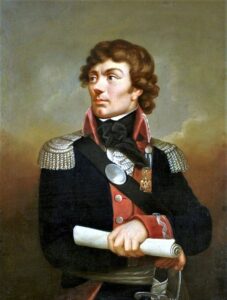
You wrote that Kościuszko had an African aide de camp named Agrippa Hull during the American Revolution. Did he travel with Kościuszko to Poland?
No, he did not. But there was a different African man by Kościuszko’s side during the insurrection. The first clue I had that he existed was when I saw a Black man in a painting when Kościuszko was released from prison by the czar. So, I kept searching to see who he was, and I found a reference in Tadeusz Korzon’s famous book on Kościuszko written in 1894, but Korzon did not know his name and referred to him as “Murzyn Jan.”
Frustrated by this little mention with no details, I spent years trying to figure out who he was and finally found a memoir by Kazimierz Wladyslaw Wojcicki who knew Jean Lapierre who was already living in Poland. Then I found a clue that a painting of him stored in the basement of the museum. I went to the director of the museum and asked if he could find it. It took them a few days, but they did find the painting. My book was the first time this painting was published. It was called Domingo, probably because he may have been from “Santa Domingo” which is in Dominican Republic on the Island with Haiti. When the insurrection was defeated by the Russians, Jean Lapierre was sent to prison in Russia together with Kościuszko. Lapierre later went to work as a bookkeeper for the Radziwiłł family.
After the visit in the United States, Kościuszko travelled to France as he hoped to engage Napoleon in the struggle for the Polish freedom. Did this plan succeed?
Kościuszko secretly returned to Paris because he thought that Napoleon might help the Poles. But he soon realized that Napoleon was a tyrant, stating that he would be the “gravedigger of the republic” and refused to support him.
The French revolutionaries dubbed him “Citizen Kościuszko” because of his dedication to liberal causes and liberty for all. After France fell back into tyranny under Napoleon, Kościuszko first moved to the French countryside and later to Soleure, Switzerland where he spent the final years of his life.
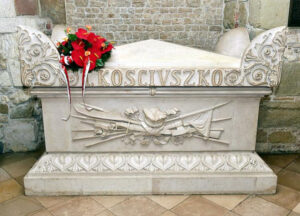
Toward the end of his life, after some of the country’s noble families followed their own financial interests to help partition Poland, Kościuszko said, “I am the only true Pole in Europe, all the others have been rendered by circumstances the subjects of different powers.” He was a true patriot, but he was also humble and not a nationalist.
During his lifetime, Kościuszko was widely recognized as a man of values, how was he commemorated right after his death?
After Kościuszko died in exile in Switzerland on October 15, 1817, the news spread through Europe and funeral masses were held in Catholic, Lutheran and Calvinist churches. Even Jewish temples and Muslim mosques held services where the worshippers prayed for God to take Kościuszko’s soul to heaven.
Kościuszko’s heart was removed from his body, embalmed, and placed in a bronze urn, with instructions that it only be returned to his country only once Poland was free. Tsar Alexander sent a wagon to Switzerland so that Kościuszko’s body could be buried in Wawel Castle in Krakow, in the presence of Sobieski and Poland’s other kings.
How did Kościuszko’s legacy shape the American nation in the first century of American independence?
Kościuszko had suggested to Thomas Jefferson that the United States needed a military academy like the schools where he had studied in Paris and Warsaw. When Jefferson became President, he established The United States Military Academy at the Fortress West Point that Kościuszko had designed and constructed.
Gen. William Davie asked Kościuszko to write a manual for the American Army on artillery warfare and the result was Kościuszko’s “Manoeuvres of Horse Artillery,” which became one of the first textbooks used at West Point.
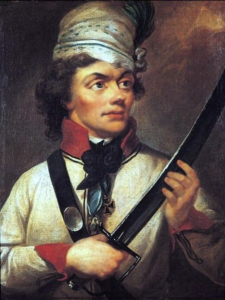
But for Kościuszko, there was no freedom unless everyone was free, which is why he was dedicated to the abolition of slavery. But more importantly he put his money where his mouth was and at the time of his death, his estate in America worth more than $17,000. Unfortunately, Jefferson did not carry out this will, and decades later the money was embezzled from Kościuszko’s account.
In 1908, Israel Losey White, literary editor of the Newark Evening News wrote: “This will is an unwritten chapter in American History. It is possible that if its suggestions had been followed, there might have been no Civil War in the United States, and the race problem of today would not be so perplexing to economists.”
What can be said of Kościuszko’s legacy these days? Are his ideas commemorated in contemporary America?
It is mostly the Polish American community that commemorates his life. In Polish neighborhoods around the United States, statues of Kościuszko have been erected in his honor. My book, The Peasant Prince: Thaddeus Kościuszko and the Age of Revolution spurred more interest in his life and my documentary film Kościuszko: A Man Before His Time has been shown on Public Television Stations across the United States for several years. It was also shown on television on Poland.
But as Kościuszko was dedicated to education for all, he would be pleased that The Kościuszko Foundation awards a million dollars annually to fund scholarships, academic research and to promote Polish history and culture. The foundation’s headquarters in New York City has a museum of Polish painters including Matejko, Malczewski, Kossak, and the Chopin competition and other concerts keep Polish music alive.
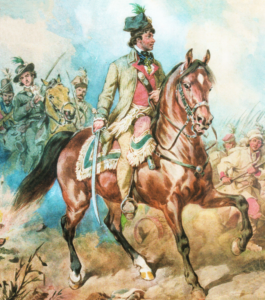
During one of the Black Lives Matter protests in Washington D.C. the statue of Kościuszko was defaced with spray painted graffiti and slogans. Are Americans aware of Kościuszko’s dedication to ending slavery and providing civil rights to African Americans?
Hundreds of African Americans are killed by the police in the United States every year. That’s more than twice as many per capita than the number of white people killed by the police. Although there has been progress over the years, Black people continue to be mistreated in the United States. Racism and inequality are still a major problem in America and in the era of cell phone videos, the horror and pain of those killings is now obvious for all to see. Frustrated Black Lives Matter protestors defaced many statues during protests in 2020, and one of them was the Kościuszko statue across the street from the White House.
While graffiti can be washed off, a person killed by police cannot be brought back to life. The protestors that sprayed paint on the Kościuszko did not know that he was one of the first historical figures in America to say that Black Lives Matter. If he were alive today, Kościuszko would no doubt speak up for the rights of African Americans, just like he did two centuries ago.
Most Black people are unaware of his efforts, but some do, like the Black educator Booker T. Washington who wrote in his memoirs that in 1910, “When I visited the tomb of Kościuszko [in Krakow] I placed a rose on it in the name of my race.”
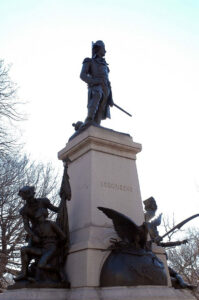
Do you think that Kościuszko can still play an important role in Polish American relations?
The United States was founded on the principle of “life, liberty and the pursuit of happiness.” Kościuszko stood for freedom for all. He was a liberal icon through and through.The pendulum of history swings back and forth between good and evil, and any relationship between countries should be based on equality and fairness for all.
During the French Revolution, members of the National Assembly that supported the king, the rich and the church, sat to the right. And those who supported progress and liberty for all, sat to the left. This is where the terms right and left originated.
Politicians sometimes twist these words with semantics, but the truth is that liberal means supporting tolerance, civil liberties, democracy and individual rights. And conservative means preserving the status quo, and power for the rich and the church. Kościuszko was clear where he stood in support of the interests of the people over the interests of the rich.
Kościuszko dedicated his life to tolerance and liberty for all. He was a man ahead of his time and led by setting an example that we should all try to follow.
Interviewer: Łukasz Kożuchowski





